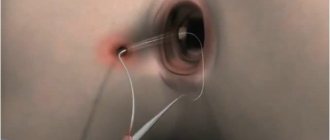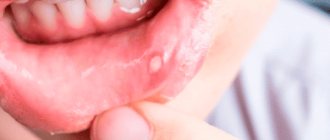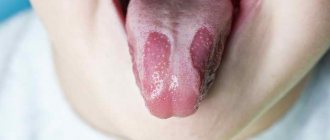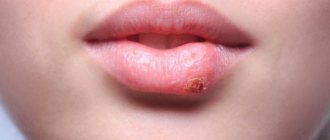- April 13, 2019
- Diseases and conditions
- Natalya Matveychuk
Stomatitis is a serious illness that occurs in children of any age. The main symptom of its manifestation is severe pain in the mouth. In this regard, the child refuses to eat and is capricious a lot. Traditional treatment for this disease involves the use of antibiotics and antiseptics. However, treatment of stomatitis in children with folk remedies also takes place. Traditional medicine recipes will help your baby get rid of unpleasant sensations and contribute to his speedy recovery.
Causes of the disease
Experts note several reasons for the formation of stomatitis in children:
- Failure to comply with hygiene rules. The pathogens enter the oral mucosa due to dirty hands or toys.
- Poor oral hygiene. Stomatitis can develop from both insufficient and excessive oral hygiene.
- Related ailments. During exacerbation of other diseases, the child’s immunity is significantly reduced. In this regard, the risk of developing stomatitis increases.
- Child's age. Most often, this disease occurs in children aged 0.5 to 3 years. This is due to the body’s weak defenses.
- Visiting a preschool. When a child enters kindergarten, he becomes susceptible to stomatitis. The whole point is that a baby who has contact only with close relatives ends up in a group of children who are carriers of a different microflora.
What is the danger?
As with most childhood illnesses, the main danger lies in diagnostic errors. It would seem that a simple disease has a simple treatment. But in reality everything is much more complicated. The fact is that stomatitis may not be an independent disease, but only a symptom of more dangerous conditions, such as diseases of the stomach and intestines (gastritis, duodenitis, colitis and a number of others). Stomatitis may indicate that helminthic infestations are firmly established in the child’s intestines. In addition, ulcerative inflammation of the oral mucosa can also occur with HSV (herpes simplex virus), as one of the manifestations of herpetic infection.
Stomatitis can be both allergic and traumatic. The most common condition among young children is catarrhal disease; it is caused by a violation of hygienic requirements for the maintenance of the oral cavity.
Many parents believe that stomatitis is always contagious, so they immediately provide separate dishes for the sick child so as not to infect other family members. It is not always so.
Only vesicular stomatitis, which is of viral origin, is dangerous to others. Other forms of the disease are not transmitted through household contact.
An error in diagnosing the origin of the disease can cause serious consequences - inflammation can spread to the larynx, cause negative processes in the respiratory system, and even contribute to the development of a systemic infection.
Treatment of stomatitis in children with folk remedies
Therapy for this disease is simple. The duration of treatment averages from 7 to 12 days. Often stomatitis can go away on its own. However, with children you shouldn’t leave everything to chance. If the child is not treated promptly, this disease can cause serious complications and the spread of infection.
Along with traditional therapy, doctors recommend paying attention to traditional medicine. They note positive dynamics in many of their patients. The most common remedies for treating the disease in children are infusions of chamomile and calendula, baking soda, flaxseed oil, aloe, kombucha and much more. Treatment of childhood stomatitis at home involves rinsing and treating sores.
Symptoms and signs
Stomatitis is a disease that is almost impossible to miss; any mother is able to detect the characteristic signs that a child has an inflammation of the oral cavity:
- Anxiety and bad mood of the child.
- Decreased appetite, pain when eating.
- Changes in the oral mucosa: redness, quite severe swelling, the appearance of ulcers with a white, gray or yellowish coating.
- Increased salivation, drooling.
- Sometimes you may notice bleeding gums.
- There is almost always an unpleasant odor from the mouth.
Doctors still cannot explain the true causes of stomatitis. The most obvious premise - poor hygiene - does not raise any questions. It is clear that pathogens that enter the oral cavity cause inflammation. But experts are inclined to believe that not only microbes are to blame for this unpleasant illness.
Sometimes stomatitis is provoked by certain immune processes. Presumably, such a reaction in the mouth occurs in cases where, for reasons that are not fully understood, the immune system cannot identify certain particles or molecules. According to the “logic” of immunity, since it is not identified, it should be destroyed, and an army of lymphocytes “rushes” at the mysterious guests. This is what causes ulcers to appear.
The most susceptible to the disease are children who have a poor and unbalanced diet, babies who have recently suffered from diarrhea, repeated vomiting, or intestinal infections, since they have some degree of dehydration.
If a child has taken medications that “dry” the mouth or reduce the amount of saliva produced (for example, antihistamines), he also has a fairly high risk of developing stomatitis. In adolescents during puberty, hormonal levels are unstable, and this is also a prerequisite for inflammation of the oral cavity.
Children with a genetic predisposition to this disease are often susceptible to stomatitis: if mom or dad often encounter this unpleasant condition, then there is a high probability that the child will inherit the high-quality composition of the oral microflora and will also suffer from stomatitis.
Poor-quality braces or their incorrect installation can also cause inflammation of the oral mucosa.
Treatment for ordinary stomatitis is not an extremely difficult task ; it is possible to cope with it in 7-12 days, including using remedies from the arsenal of traditional healers. Often stomatitis goes away on its own without treatment at all. But when it comes to children, there is no need to hope for this, because the lack of proper therapy can lead to complications and the spread of infection.
Salt rinse
The mouthwash is easy to prepare and does not involve a lot of expense. To prepare it, you need to take one small spoon of salt and the same amount of baking soda. All components must be added to a glass of warm water.
For one mouth rinse for stomatitis in a child, you need to use at least 250 ml of the prepared solution. During the procedure, the baby should not swallow the folk remedy. The oral cavity should be treated with this solution every 2 or 3 hours.
Aloe
It is worth noting that this plant is effective not only for stomatitis. It helps eliminate and prevent other diseases. Treatment of stomatitis with aloe involves treating the mouth for ulcers. To do this procedure, you need to tear off a leaf of the plant and put it in the refrigerator for a while. After which they treat the damaged areas.
It is important to remember that this treatment method is not suitable for children who have multiple ulcers. In this case, you need to squeeze the juice from the aloe leaf and mix it with a small amount of water. The resulting product must be irrigated into the mouth every three hours.
Sage
Treatment of stomatitis in children with folk remedies always brings positive results. Sage is no exception. This medicinal plant has analgesic and anti-inflammatory properties. To prepare a useful remedy, you need:
- Measure out two large spoons of dry ingredients.
- Pour in 300 ml of hot water.
- Infuse the broth, cool and filter through thick gauze.
Sage for stomatitis in children can be brewed in a thermos. In this case, the product must be left for about an hour. Rinse your mouth with the prepared decoction 4 or 5 times a day.
Chatterboxes
Such remedies are effective for aphthous and herpetic stomatitis, but in their early stages. Chatterboxes are also suitable for children, but it is better to check before use whether the baby has allergies. You need to use it at least three times a day, maximum 8. Products with nystatin are applied no more than three times. Several rules must be followed:
- Start processing 30 minutes after eating;
- Be sure to rinse your mouth before applying them (children can rinse their mucous membranes). Both soda solution and chamomile decoction are suitable for this;
- lubricate wounds and aphthae with either a piece of cotton wool or an ear stick;
- Afterwards you can’t eat or drink for half an hour.
Tea mushroom
Treatment of stomatitis in children with folk remedies is most often carried out with the help of medicinal plants. However, there is another proven remedy - kombucha. Today, few people have it in their home, but in vain. Kombucha has a huge number of beneficial properties, which, among other things, help eliminate the symptoms of stomatitis.
The water in which the kombucha has formed is irrigated into the mouth 5 or 6 times a day. It is worth noting that the child’s disease becomes less pronounced the very next day. And after three or four days the pain goes away and the ulcers heal.
When are traditional methods not enough?
Stomatitis in children differs from a similar diagnosis in adults in the frequency of its severe course. The imperfect immune defense of a child copes with security functions worse than that of an adult. Therefore, it is often possible to observe multiple ulcers in the child’s mouth, affecting both the inside of the cheeks and the tongue. At the same time, the temperature rises, the baby’s well-being deteriorates significantly, and severe pain syndrome appears. Such stomatitis requires the prompt use of antifungal agents, antiseptics and painkillers; sometimes doctors prescribe antiviral drugs. Doctors believe that it will be better if treatment of complex forms is carried out with pharmaceutical medications.
The opinion of expert Dr. Komarovsky about childhood stomatitis, and you can learn about situations when folk remedies alone cannot do it in the following video.
Herbal collection
To effectively treat stomatitis at home, you can prepare the following tincture:
- You need to take one large spoon of oak bark, chamomile, calendula, bergenia and verbena.
- Brew all ingredients with a glass of boiling water.
- Then place the mixture in a water bath.
- Boil the broth for about 15 minutes.
- Infuse the tincture, cool and filter.
The resulting product should be irrigated into the mouth 3 or 4 times a day.
Other treatments for stomatitis
You can significantly reduce pain in the mouth with the help of hydrogen peroxide. To carry out the procedure, you need to take one small spoon of the product and mix it with half a glass of boiled water. The prepared medicine should be used to treat the oral cavity several times a day.
No less effective products for healing stomatitis ulcers are flaxseed and sea buckthorn oils. They contain vitamins A and E. They promote rapid healing of ulcers in the oral cavity. It is enough to moisten a cotton pad with them and blot the affected areas. If the process of purchasing these oils is problematic, you can purchase the drug “Aevit” at the pharmacy. It is sold in capsules. To treat stomatitis, squeeze the contents of the capsule onto the affected area 3-4 times a day.
What should not be used for stomatitis?
During the period of illness, you should not use the following actions:
- Cauterize the ulcers with iodine or brilliant green, as well as alcohol-containing compounds.
- During treatment, the child should not eat cold, hot or spicy foods. Otherwise, it will increase pain and inflammation.
- It is not recommended to brush your baby's teeth with non-natural toothpaste. It will be better to use special children's toothpastes for sensitive teeth.
- It is not advisable to use honey in the treatment of stomatitis. Of course, this product has all the properties to eliminate the disease. However, with stomatitis caused by the Candida fungus, bee honey will only intensify the inflammation process.
Disease prevention
It is impossible to protect a child from stomatitis, since the cause of its occurrence can be different. If a baby has a weakened immune system, he can easily catch any infection. After suffering from ARVI, a child should refrain from visiting crowded places so that his defenses can be restored.
In addition, parents should not forget about the rules of personal hygiene. Small children constantly put dirty hands in their mouths. This way they can contract bacterial stomatitis. If possible, the child should be isolated in another room and given separate dishes and toys. Such prevention will help prevent infection of other family members.
If a child develops this disease very often, then his parents should pay attention to their immunity. The doctor will prescribe procedures related to strengthening the body's defenses, taking vitamins and restoring microflora in the digestive tract.
Breastfeeding can also be considered to prevent the disease. With mother's milk, antibodies are passed to the child, which protect him throughout the year.
Don't forget about brushing your teeth regularly. If the baby’s parents follow all stomatitis prevention measures, this disease will bypass them.
The danger of self-medication
Do not underestimate stomatitis and assume that the child is not in danger. If the baby’s immunity is weakened and the disease is severe, the infection can quickly spread to neighboring areas, such as the nasopharynx and larynx. In addition, pathogens in food enter the digestive tract. Therefore, if you really want to treat the child yourself, go ahead. But remember about the “critical” periods of self-medication: if stomatitis does not go away within 7 days, you should immediately consult a doctor.










